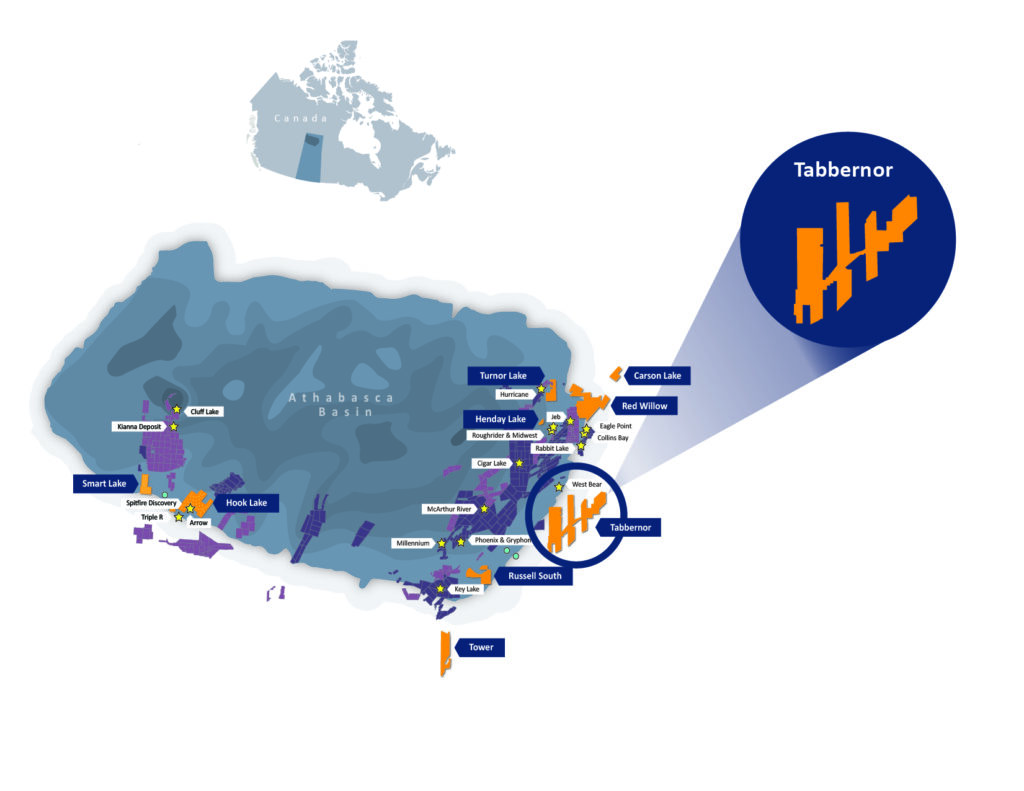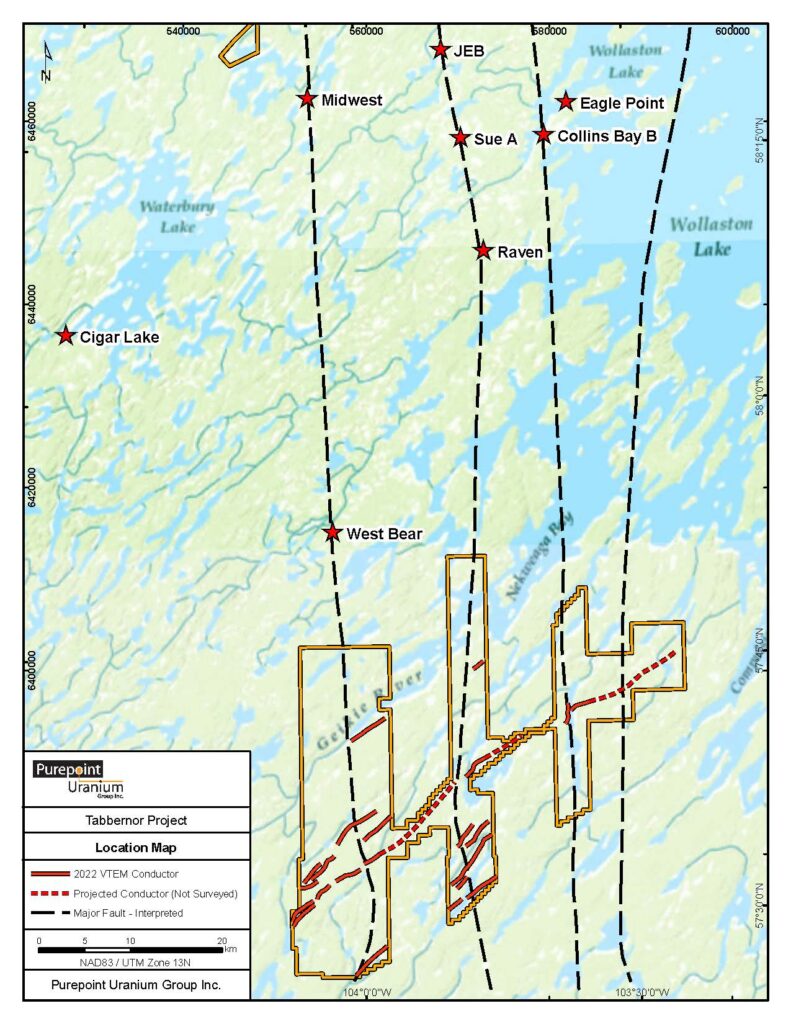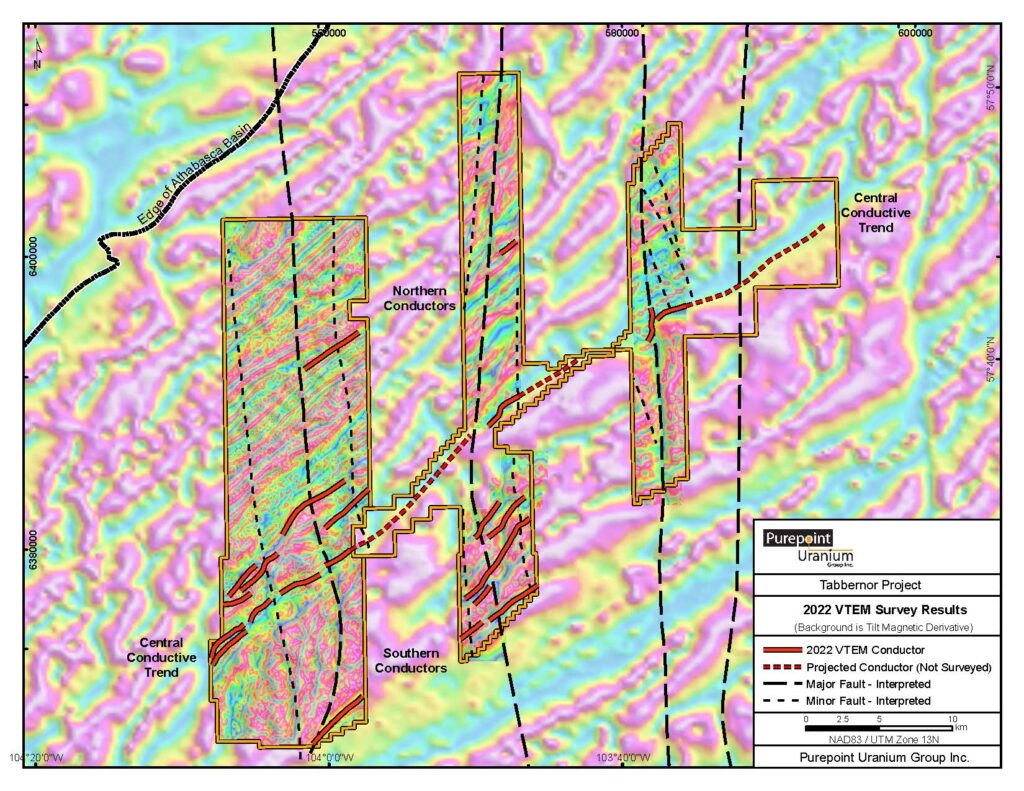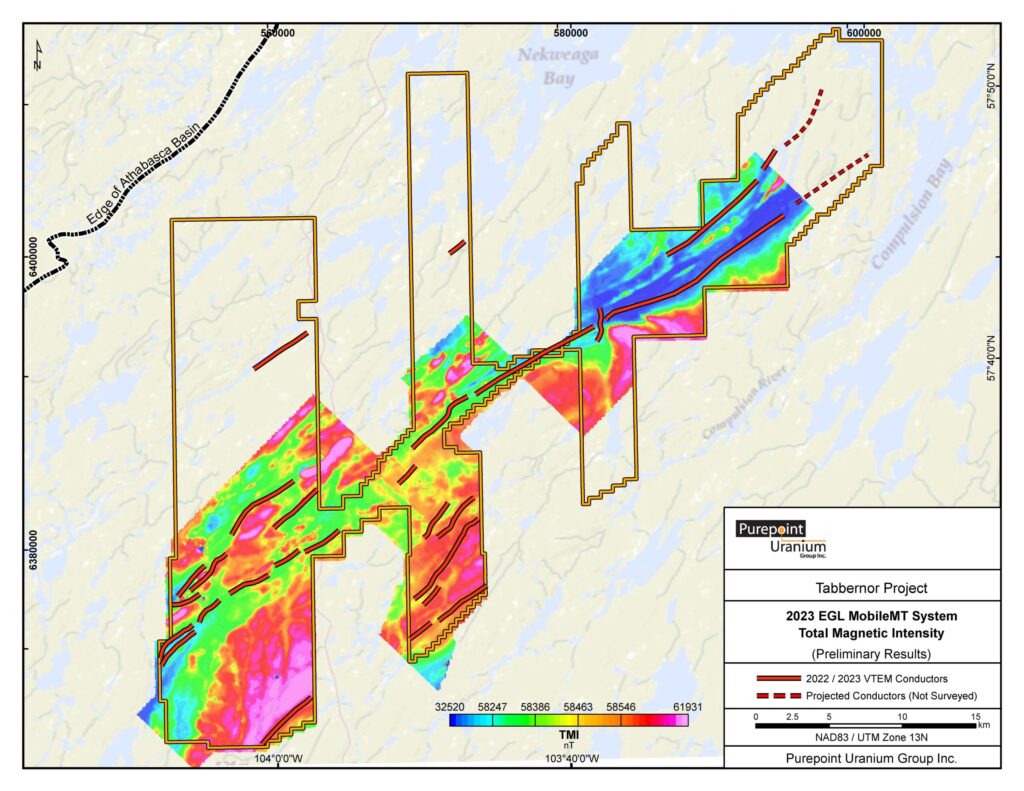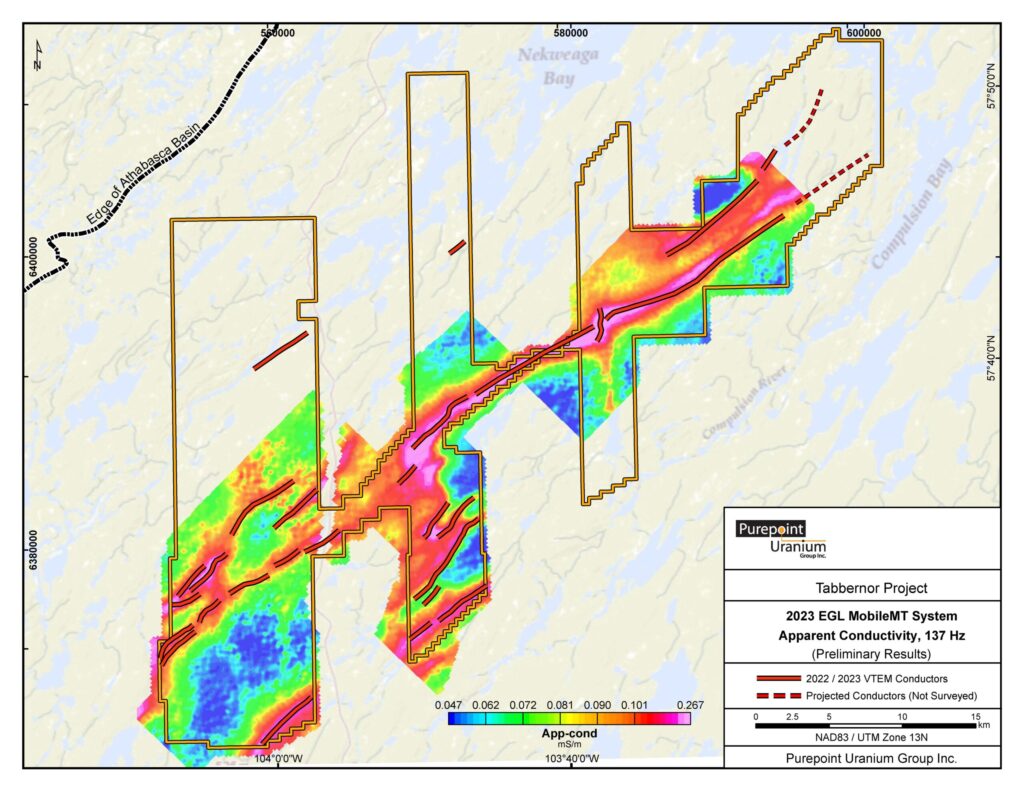Due South of Some of the Basin's Largest Uranium Deposits
About Tabbernor Project
The 100% owned Tabbernor Project was staked along three major trends of the Tabbernor Fault System, a deep seated, 1,500-kilometre crustal shear system that runs north through the Athabasca Basin. The system not only hosts over 80 historic mines and gold occurrences but also crosscuts the Basin’s mine trend aligning itself with 8 of the Basin’s largest uranium discoveries.
The Tabbernor Project consists of 34 claims that total 79,463 hectares. The original block of three north-south claim groups (23 claims) that covered Tabbernor structures have now been joined by an additional 11 claims that cover a strong east-northeast trending corridor of conductive rocks.
Tabbernor Fault System
The Tabbernor Fault System (TFS) is a wide, >1,500 km geophysical, topographic, and geological structural zone that trends approximately northward along Saskatchewan’s eastern boundary. Purepoint’s research has shown that although none of the province’s currently known uranium deposits have been linked to the north-south trending TFS, localized shear zones hosting uranium mineralization may have an associated north-south structural component.
Reactivation of the TFS may have coincided with the age of formation of large uranium deposits in the Athabasca Basin (Davies, 1998). Davies also concluded that structural similarities between the TFS and mineralized areas suggest that the fault system may have had a control on the location of mineralization. More specifically, he considered that several deposits, such as the Sue, Midwest, Dawn Lake and Rabbit Lake all demonstrate a north-south control and strong Tabbernor-like characteristics.
Purepoint has staked claims to the south of the Athabasca Basin based on interpreted north-south lineaments linking the Key Lake and Millennium deposits, the Midwest and West Bear deposits, the Jeb and Raven deposits, and the Collins Bay and Eagle Point deposits.
Reference:
Davies, J.R. (1998): The origin, structural style, and reactivation history of the Tabbernor fault zone, Saskatchewan, Canada; Master’s thesis, McGill University, Montreal, Quebec, 105p.
Tabbernor News
- 1
- 2
